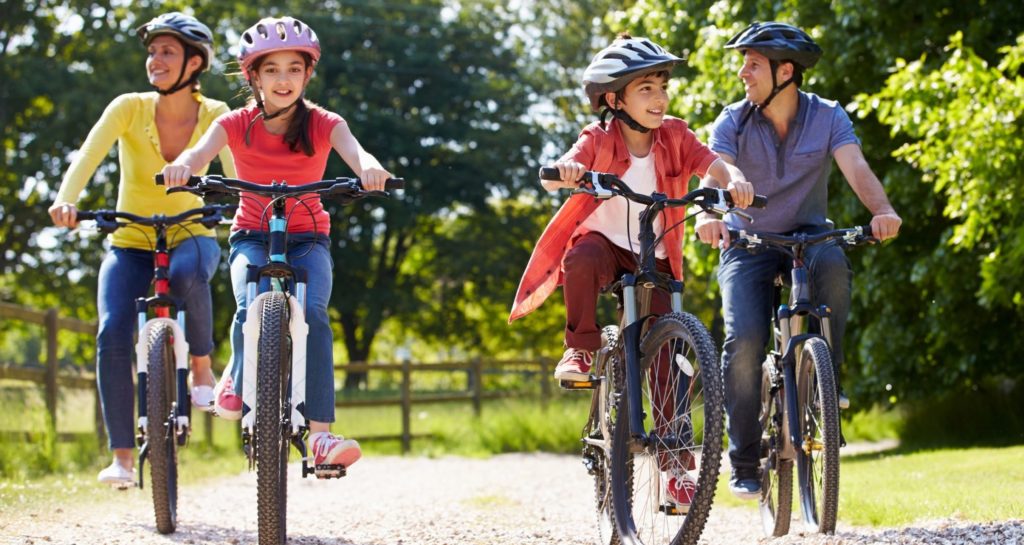With more people buying and riding bicycles this summer than in years past, cycling safety is more important than ever. And whether you are cycling for transportation, for exercise or just for fun, there are hazards to consider. According to the U.S. Consumer Product Safety Commission about 60 percent of bicycle-related deaths annually involve a head injury. Helmets play a crucial role in bicycle safety and saving lives: providing protection from head injuries during a crash or fall.
Research from the American Association of Neurological Surgeons shows cycling is responsible for more head injuries than any other sport or recreational activity. While helmets are worn to protect the head and face, not all helmets are created equal. A great deal of science has gone into the development of cycling helmets, as they are made up of two main parts: the hard outer shell (designed to spread the force of an impact across your skull, making it less likely to fracture) and a soft inner liner (meant to absorb the impact energy, so the head is less affected during impact.
So, what do you look for when buying a bicycle helmet? Besides the obvious answer “one that you will wear,” here are five things to consider:
- Does it fit snugly and stay in position?
- Is it comfortable and not too heavy?
- Does it have enough ventilation so it stays cool?
- Does it meet the latest consumer standards? See CPSC.gov for information and requirements for helmets.
- Do you like the look of it? This is key to actually wearing it!
Finding the right fit is very important. For the most comprehensive list of helmet sizes according to manufacturers, visit the Bicycle Helmet Safety Institute website: www.bhsi.org/.
With millions of bicyclists sharing the road with motorized vehicles, it is vital for both cyclists and drivers to take safety precautions seriously. Before getting out and enjoying a bike ride on the road or at a park, make sure to:
- Wear a properly fitting helmet
- Adjust your bicycle to fit your body
- Inspect the equipment (check: air in tires, well-oiled chain, brakes)
- See and be seen. (Wear bright clothes; put reflectors on clothing or lights on the front and back of your bike; and don’t ride after dark).
- Follow the rules of the road (ride with traffic flow, use hand signals)
Sources: American Association of Neurological Surgeons, Consumer Product Safety Commission, National Safety Council, National Highway Traffic Safety Association, Bicycle Helmet Safety Institute
